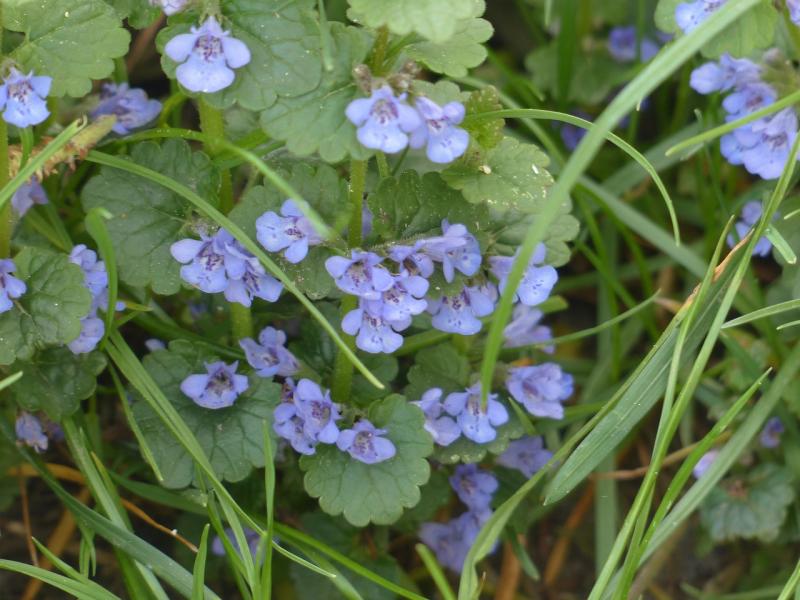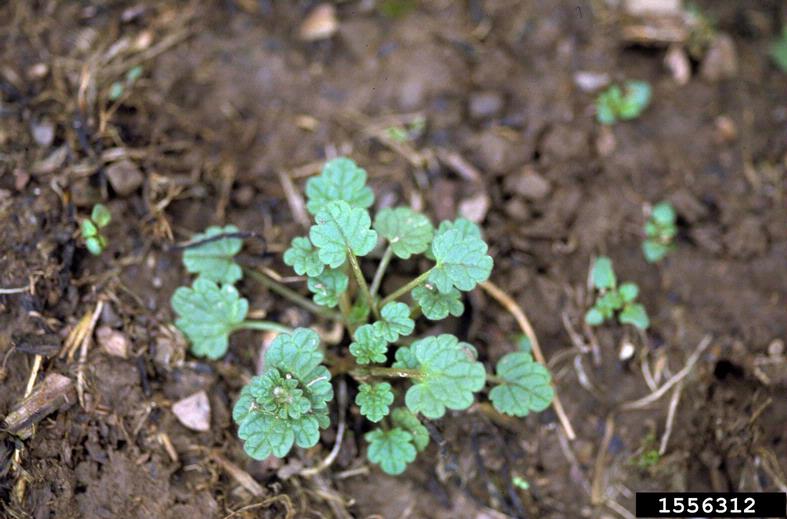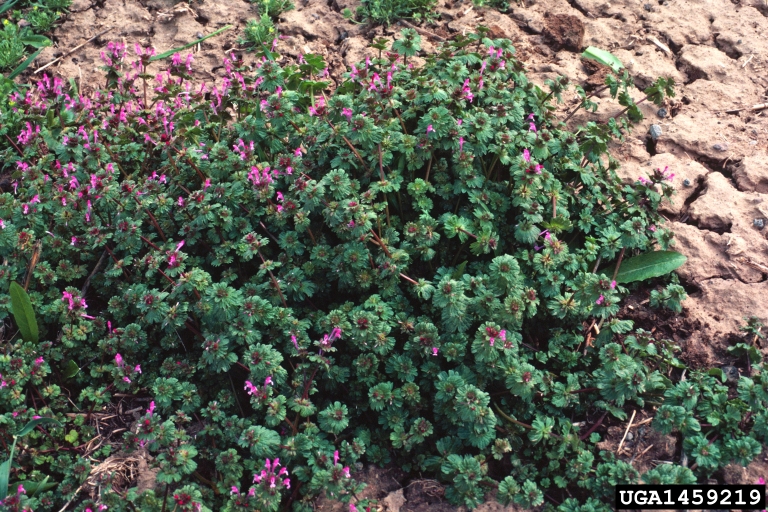
Last week, we looked at the best time and methods for controlling yellow nutsedge and summer annual weeds. Next up, let’s discuss broadleaf perennial and winter annual weeds. Examples of broadleaf weeds include dandelions, violets, ground ivy and poison ivy; from a very simplified perspective, broadleaf weeds are any weed which is not a grass or sedge.
 Perennial Broadleaf Weeds
Perennial Broadleaf Weeds
September is the best time of year to control tough perennial broadleaf weeds in the landscape. At this time of year, they begin moving carbohydrates from the leaves down to the roots for winter storage. If herbicides are applied at that time, they are transported to the roots along with the carbohydrates killing the entire plant instead of just the leaves. And even if the chemical doesn't completely kill the weed, the plant goes into winter in a weakened condition and is much more susceptible to winter kill.
Also, drift potential for 2,4-D and dicamba – herbicides commonly used for broadleaf weed control – is lower in fall minimizing damage to non-target species.
Post emergent weed control is best achieved with quinclorac, carfentrazone, sulfentrazone, mecoprop, dicamba or 2,4-D. Many products available at garden centers or home stores will contain a mixture of 2 or more of these herbicides. Combination or 3-way products, as they are sometimes called, are more effective at killing weeds because of the different mode of action each chemical contributes to the mix.
- Carfentrazone – broadleaf weeds
- Mecoprop - broadleaf weeds
- Dicamba – broadleaf weeds
- 2,4-D - broadleaf weeds
- Triclopyr – broadleaf weeds
- Quinclorac – grassy weeds, broadleaf weeds
- Sulfentrazone - grassy weeds, broadleaf weeds, sedges
These products are selective and won't damage grass, but use them with caution in landscape beds since accidental spraying or spray drift can damage shrubs and ornamental plants. Quinclorac is particularly effective at controlling wild violets.Consider adding a spreader-sticker to your tank mix for even better control. Spreader-stickers are additives that help the chemical you apply spread over the weed leaf surface and adhere to it better. When you're trying to control weeds with waxy leaf surfaces, like wild violets, a spreader-sticker is particularly helpful. Look for products like Earl May's Turbo Spreader Sticker.
When targeting difficult weeds, don't expect 100% control with one herbicide application. Two or three herbicide applications, 2-3 weeks apart will usually be necessary. After making the herbicide application, don't mow for 2-3 days to allow the plants to take in the chemical.
 Winter Annuals
Winter Annuals
Winter annual weeds include both broadleaf and grassy weed types, such as annual bluegrass, goosegrass, field speedwell and henbit. These weeds germinate in the fall, overwinter as a small rosette of foliage, and begin growing again in early spring. They complete their life cycle and go to seed in spring or early summer.
Gardeners usually want to control these weeds in spring when they are blooming, but that’s not the best strategy. Since winter annuals are blooming by the time gardeners notice them, they usually will or have already produced seed by the time herbicides kill them. If you had these weeds in your landscape this spring, they should have disappeared by now.
 Winter annual weeds are best controlled in September. Mulch and an application of pre-emergent herbicide are the best method of control for a weed-free landscape next spring.
Winter annual weeds are best controlled in September. Mulch and an application of pre-emergent herbicide are the best method of control for a weed-free landscape next spring.
Or kill them right after they germinate by hoeing or spot-spraying young plants with post emergent herbicide, such as those containing 2,4-D, quinclorac or triclopyr.
No matter what herbicide you purchase, always read and follow the label directions, and use the personal protective equipment recommended to keep yourself safe.Reference to commercial products is made with the understanding that no discrimination is intended and no endorsement by Nebraska Extension is implied. Mention does not imply approval or constitute endorsement by Nebraska Extension. Nor does it imply discrimination against other similar products.
Images:
- Young winter annuals, like this henbit (Lamium amplexicaule), can be hoed out in fall. Image from Ohio State Weed Lab, The Ohio State University, Bugwood.org.
- Mature winter annuals, like this blooming henbit, are much more difficult to control with herbicides and are likely to produce viable seed despite control measures. Image from Steve Dewey, Utah State University, Bugwood.org.
- Annual bluegrass, Poa annua, is a winter annual weed and an annoyance in lawns due to it's ability to develop seedheads below normal mowing heights ruining the look of a manicured lawn.